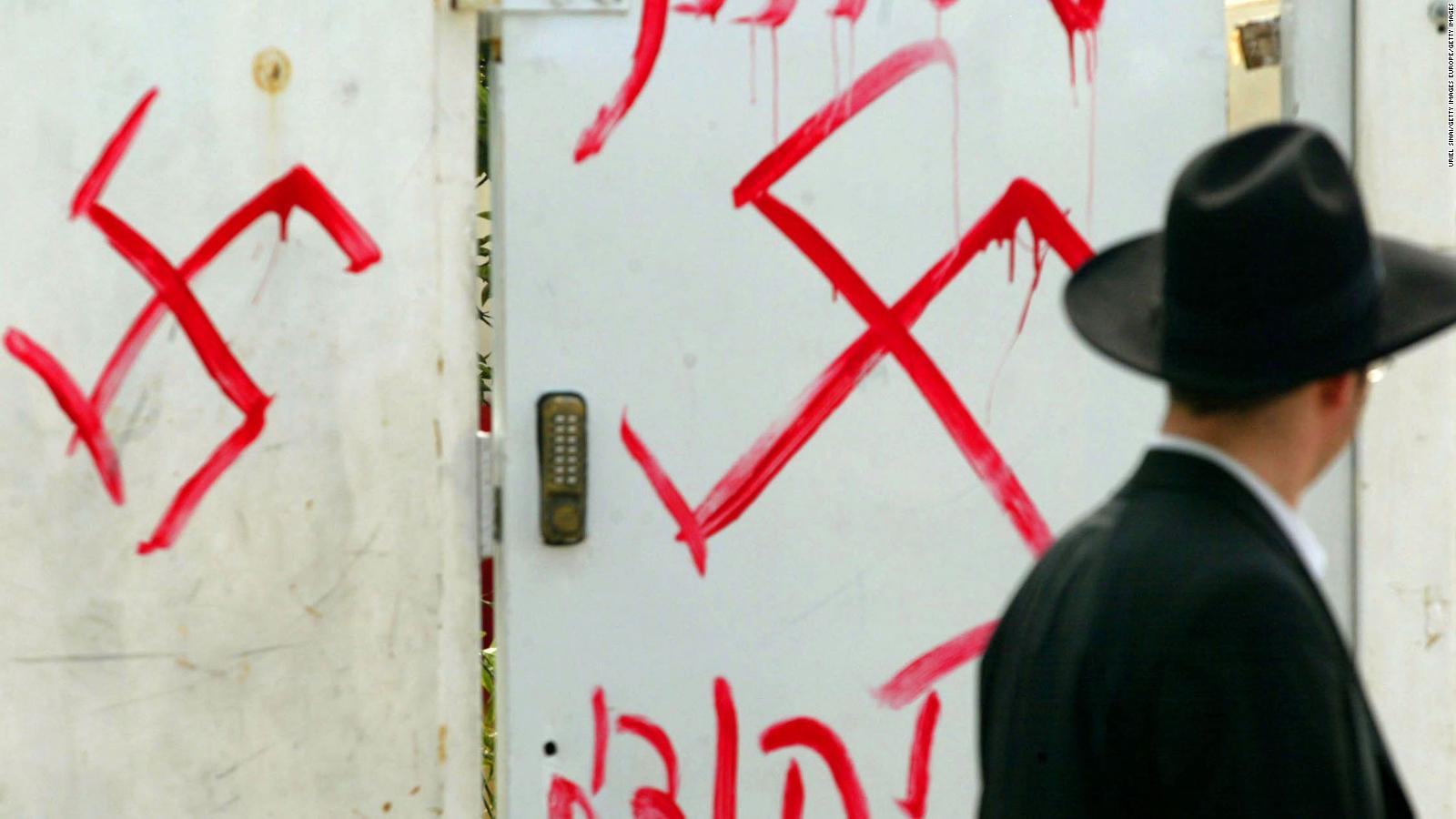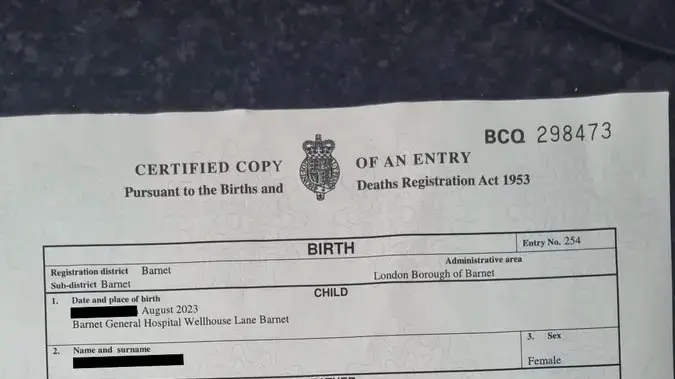"We are the embodiment of the other," says a rabbi in the face of anti-Semitism 2:03
(CNN Spanish) --
Between 1933 and 1945 the totalitarian government of Germany, controlled by the National Socialist Party (or Nazi), carried out a campaign of persecution and extermination of the Jewish population in the country.
After the start of World War II, in August 1939, the Nazis carried out this persecution in all the occupied countries —France, the Netherlands, Poland and parts of the Soviet Union, to name just a few examples— and from 1941 the segregations , deportations and mass enclosures in concentration camps gave way to extermination.
"Anti-Semitism is the hatred deposited in a Jew," says Rabbi Rojzman in an interview with CNN
By the end of the conflict an estimated six million Jews were killed across Europe, according to the United States Holocaust Museum.
This "final solution to the Jewish question," as the extermination program came to be known, represented the culmination of centuries of anti-Semitism in Europe, and was in fact not the first wave of persecution against the Jews.
Vandalized graves with swastikas and anti-Semitic inscriptions in 2019 at the Westhoffen Jewish cemetery near Strasbourg in eastern France.
(Credit: PATRICK HERTZOG/AFP via Getty Images)
The extermination of European Jews by the Nazis ended with the defeat of Germany in World War II, on May 9, 1945, and those primarily responsible for this Holocaust were tried and convicted a year later at the Nuremberg Tribunals.
advertising
In addition to putting the Nazi leaders on trial for their crimes, in Nuremberg the scope and unprecedented brutality achieved during the Holocaust was also exposed, with the detail provided by the documents, photographs and filming.
What was the Holocaust?
What did it mean and how many dead did it leave?
A problem that is still current
But anti-Semitism — discrimination or hostility against Jews as a racial or religious group, according to the Encyclopedia Britannica — is not an extinct phenomenon.
In fact, it is experiencing a moment of expansion, at least in the United States and Europe, fueled by hate speech and unfounded conspiracy narratives that spread on social networks.
In an exclusive CNN poll conducted in 2018, one in 20 Europeans said they did not know of the existence of the Holocaust, and the figure rose to 12% in Austria, the birth country of Nazi leader Adolf Hitler.
In addition, a third of those interviewed said that the Jews used the Holocaust to improve their positions, one of the most subtle forms of anti-Semitism.
Rosenzvaig: Racism is engendered where culture is scarce 1:16
In fact, 25% of the Hungarians interviewed and 20% of the British and Poles assured that Jews represented 20% of the global population.
In reality, 0.2% of the world defines themselves as Jewish, according to the Pew Research Center, and this exaggeration is also linked to anti-Semitism.
In the United States, 10% of adults know what the Holocaust was, as do 25% of
millennials
, according to the Claims Conference, which represents Jews in their negotiations for compensation from Nazi Germany.
Only 50% of adults could name a concentration camp such as Auschwitz-Birkenau, Dachau, Sachsenhausen or Bergen-Belsen.
According to the Anti-Defamation League (ADL), a Jewish organization that studies the rise of neo-fascism, in 2019 anti-Semitic attacks in the United States reached an all-time high, which continued through 2020.
More recently, different personalities have been involved in situations of anti-Semitism, such as the star of the Brooklyn Nets basketball team Kyrie Irving, who apologized in November 2022 after retweeting a link to a documentary criticized as anti-Semitic to his five million followers, or the rapper Kanye West, criticized for his anti-Semitic comments on social networks.
Where does antisemitism come from?
The term "anti-Semitism" was popularized by the German politician Wilhelm Marr in 1879, and carried to its maximum expression by the Nazis in the 1930s, incorporating racial elements into their prejudices.
The "Semitism" referred to is itself a contentious term linked to the "Semitic races" made up of peoples who speak Semitic languages, such as Arabic and Hebrew.
Jon Stewart responds to accusations against JK Rowling 2:11
But Jews have been discriminated against for centuries and in all the countries where they settled.
In ancient Rome and Hellenic Greece, the monotheism of the Jews was a source of clash with official polytheism.
While in Christian Europe, during the Middle Ages, Jews were discriminated against for their alleged responsibility, according to Christian tradition, in the death of Jesus.
In Spain, Castilla y Aragón's decision to expel Sephardic Jews in 1492 was the culmination of a period in which the prohibition of Judaism had led to the persecution of those who, even declaring themselves converts to Catholicism, were suspected of practicing their ancient tradition. religion.
While that expulsion did not put an end to the discrimination in Spain against the converts or to the surveillance of the Holy Inquisition, many Jews moved to the Americas, where the persecutions against them did not cease in Spanish domains either,
What was the Holocaust?
What did it mean and how many dead did it leave?
Already in modernity, the Jews began to be economically, socially and politically segregated in Europe, and consequently they were isolated from the political processes in the different countries, without receiving civil or political rights.
This isolation, in turn, enhanced the religious identities and traditions of isolated Jews, according to the Encyclopedia Britannica.
After the French Revolution, in 1789, and the advance of secularism in Europe, the situation of the Jews partially improved as they were integrated into their respective communities, but anti-Semitism continued to be a major force and Jews continued to be discriminated against.
Auschwitz survivors behind a barbed wire fence.
Some of the children wore adult clothing, provided by Soviet soldiers.
(Credit: Galerie Bilderwelt/Getty Images)
At the end of the 19th century, anti-Semitism took on a new scope throughout Europe, hand in hand with racial theories, social Darwinism and theories of eugenics developed in the United States, and the Jews were taken as scapegoats for the evils they afflicted. to the mainland.
The Dreyfus affair, the false accusation of espionage and treason against a French military man by a deeply anti-Semitic armed forces and press in France, has become one of the symbols of this period, as has the publication and distribution of "The Protocols of the Elders of Zion", a pamphlet outlining an alleged plan for world domination by the Jews, which was later discovered to be a forgery by Russia's secret police.
Jews in Europe faced numerous examples of discrimination in the years that followed, but the apex came with Nazism, which promoted a violent form of anti-Semitism.
It was no longer a question of religious or ideological differences with a group —in Europe, for example, the conversion of the Jews to Christianity was promoted—, but of seeking the eradication of a group considered an inferior race.
They leave hate marks on Jewish graves 5:01
The Holocaust and the so-called "final solution" of the Nazis were the culmination of a long historical process, which began with an anti-Semitic discourse that attracted voters to the Nazi party.
After Nazism came to power in 1933, Jews were almost immediately excluded from political and cultural activities, and severely limited their economic activities.
Then came the infamous Nuremberg Laws of 1935, which defined Jews, stripped them of their citizenship in the German Reich, and prohibited them from practicing most professions, among other things.
After the start of the war, the identification of Jews in the occupied territories and their internment in ghettos —specific Jewish neighborhoods in different cities— or concentration camps began to grow, as did the massive but informal killing.
As of 1941, however, extermination became an official policy.
AntisemitismInstaNewsJewsNazi











/cloudfront-eu-central-1.images.arcpublishing.com/prisa/KMEYMJKESBAZBE4MRBAM4TGHIQ.jpg)


